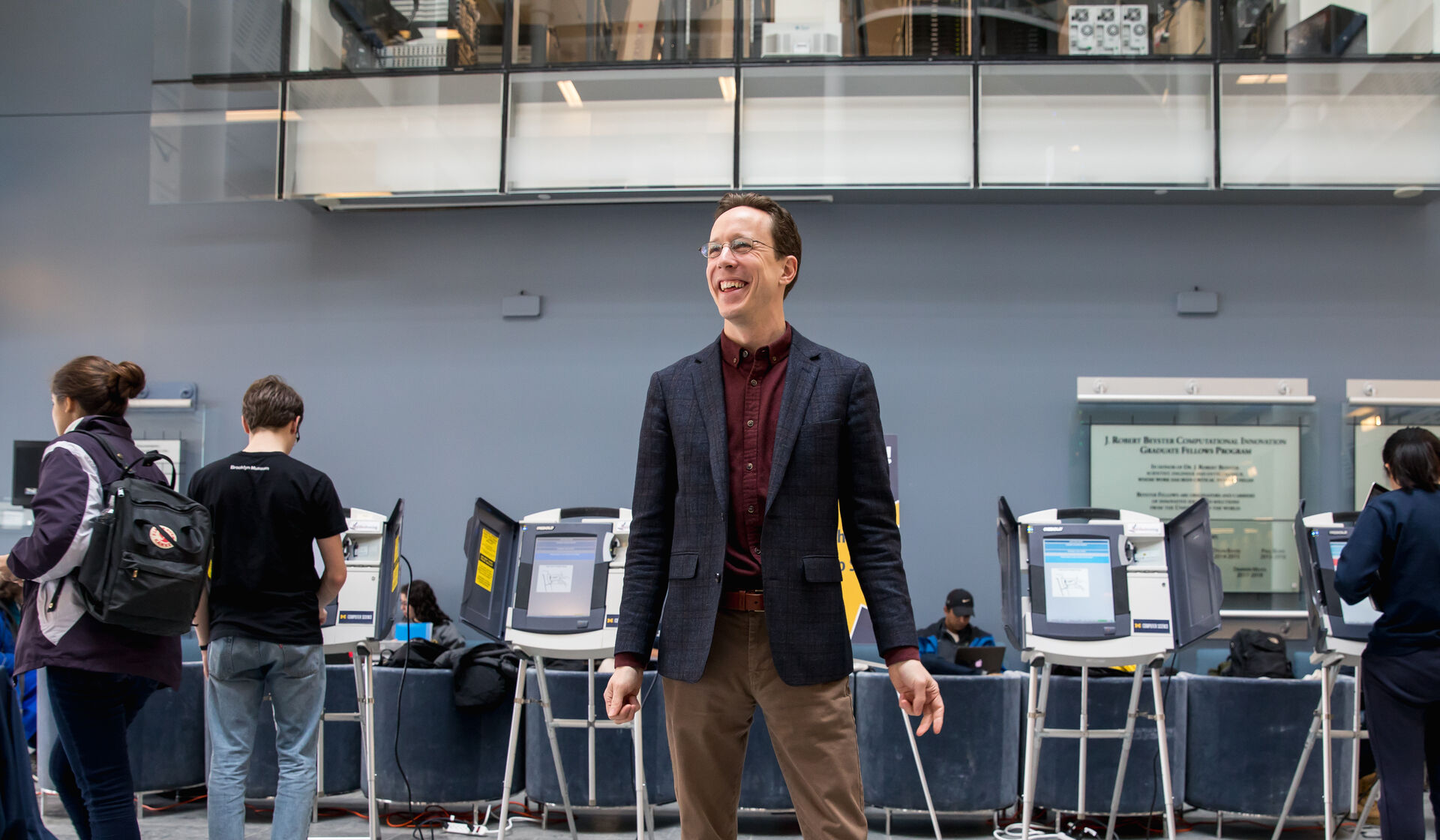Crocheting for Conservation
•
Photo by cherish dean
In November 2021, Daphne Matter, ’25, walked across campus to her biology class, hands busy crocheting a miniature stuffed turtle, mind exploring how she could blend her love of fashion with conservation work.
“What if one day, I have multiple people working [with] the organization, volunteering, making clothes, and people are waiting to see what we come out with,” Matter imagined. “That was the dream at that point in time, and now it’s kind of becoming the reality.”
By the fall of 2022, Matter launched the VIPs Fund with the help of friends and fellow U-M students. The name honors Vip the gorilla, who resided at the Woodland Park Zoo in Seattle, where Matter volunteered in high school. Using sustainably-sourced, thrifted, and donated materials, VIPs volunteer student artists create hand-crafted clothing and accessories to combat fast fashion with ethical and sustainable alternatives.
The group meets weekly to work on their one-of-a-kind pieces, which are sold online and at pop-up shops and small boutiques across Ann Arbor. In March, the student group put on the VIPs Fund Spring Runway Show at the Union, revealing new pieces as part of their Emergence collection. All profits from sales directly support the organization’s small-scale, community-focused conservation projects in Madagascar’s national parks and communities.
Matter’s vision and the group’s mission are simple, yet bold: creating a world where humans and wildlife thrive alongside one another, where fashion never sacrifices the environment, and where biodiversity is preserved through empowering local communities, sophisticated research, and effective resource management.
Fighting Fast Fashion
The United Nations Framework Convention on Climate Change (UNFCCC) reported that the fashion industry now accounts for roughly 10 percent of global carbon emissions, exceeding all international flights and maritime shipping combined. There are no signs of waning; UNFCCC has indicated that emissions from textile manufacturing could rise by 60 percent by 2030.
While most fast fashion is produced in China and other countries in Asia, the textile and apparel industry is the largest manufacturing industry in Madagascar, accounting for nearly 20 percent of the country’s GDP. Some of the most well-known fashion brands come directly from Madagascar, which ranks first amongst Sub-Saharan African countries in textile exports to the European Union and third to the U.S., significantly benefiting from free trade zones.
The industry is also the country’s largest formal employer, representing 20 percent of formal employment with an estimated 180,000 workers who often endure dangerous working conditions for low pay.
“Our focus is on providing sustainable alternative livelihoods,” Matter says of the inspiration behind creating conservation projects that support Indigenous Malagasy people.
Empowering Indigenous Communities
In Madagascar’s capital city, Antananarivo, VIPs works with a women’s artist collective, where paid artists use their talent to upcycle second-hand clothing and create sustainable pieces that are shipped to Michigan and sold alongside the student artists’ work.
“We are working with those artists to establish their careers as sustainable fashion designers . . . we are trying to provide [jobs] in fashion using those talents they have, jobs that are more ethical, more sustainable, more comfortable, and pay better than the typical fast fashion factory job.”
VIPs also established a student-led ecological research program at Ranomafana High School outside of Ranomafana National Park, one of the country’s most biodiverse areas that protects more than 160 square miles of tropical rainforest.
“There’s a lot of scientific infrastructure and a lot of foreign scientists coming in doing work that is very disjointed and disconnected from the folks who actually live in Ranomafana,” Matter says.
The goal is to make conservation careers more desirable and accessible for Ranomafana’s young scientific minds.
“There’s so much traditional knowledge already in that community . . . a lot of their families have lived there for generations. And just because it’s not Western science and just because it’s not published in the scientific narrative doesn’t mean that knowledge is invalid,” Matter says.
Continuing the Impact
After graduating in May with a double major in evolutionary anthropology and Program in the Environment, with a concentration in conservation sociology, Matter has set her sights on Kona, Hawaii, to work on a seahorse farm. She remains the lead of VIPs’ nonprofit work, handing the reins of the student organization to the next generation of student designers and conservationists.
“It’s not all about just making the art and selling it. You need to have people who are well-versed in sustainability and social justice to be able to help carry out those programs that we’re doing in Madagascar,” Matter says. “The [U-M] community has such diverse talent, and I think that’s incredible.”
Katie Frankhart is a senior writer for the Alumni Association of the University of Michigan.



